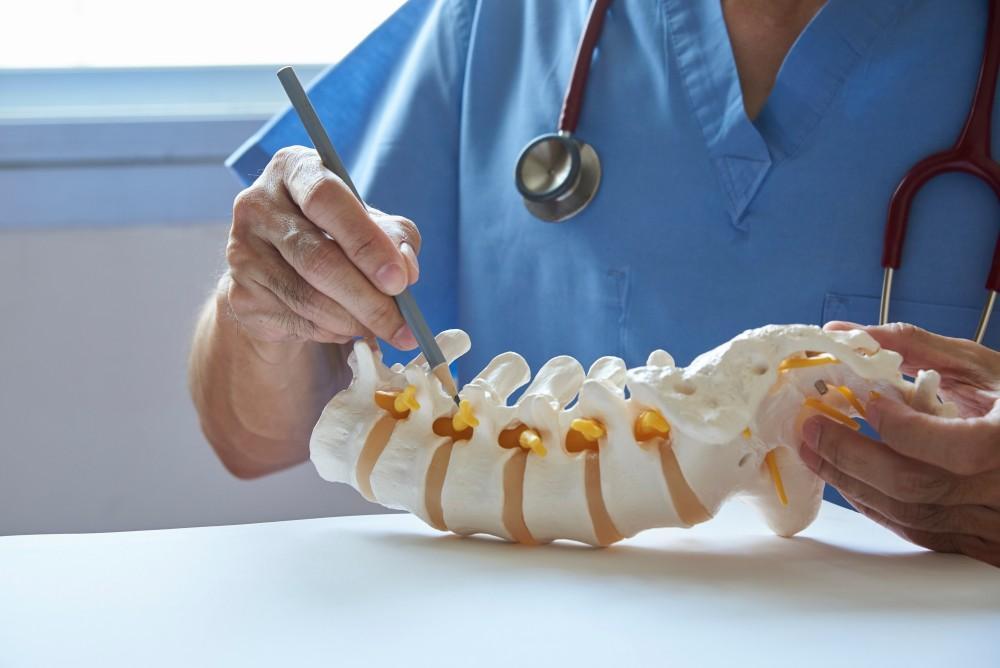
Does a Pinched Nerve Resolve on Its Own?

Pinched nerves also go by the names impinged or compressed nerves. They’re very common, affecting about 85 out of 100,000 US adults every year. The “pinch” occurs when something applies too much pressure on a nerve or spinal nerve root, leading to pain, weakness, tingling, and numbness along that nerve. The most common sources of impingement include cartilage, muscles, tendons, bone spurs, or the inner material from a herniated disc.
Pinched nerves can occur at any age, but they’re more common in people over 50 because of age-related degeneration of the spine.
At Vertrae®, board-certified neurosurgeon Dr. Kamal R. Woods and his staff understand how uncomfortable and limiting a pinched nerve can be, which is why they offer several effective treatments for it. One question they get asked frequently is if the pinched nerve will resolve on its own. Here’s their answer.
Problems caused by pinched nerves
Most people associate pinched nerves with the spine, but they don’t have to be. When they do occur in the spine, they’re most common in the cervical (neck) or lumbar (lower back) spine, since these two areas experience a lot of motion. In these cases, the impingement comes from pressure on a spinal nerve root as the nerve exits the spinal column headed for the peripheral body areas. The pain can travel along the entire length of the nerve, a condition called radiculopathy.
Perhaps the best-known example of lumbar radiculopathy is sciatica. The sciatic nerve exits the spinal column between the L4-L5 and/or L5-S1 vertebrae in the lower back. If something within the canal pushes on its root, it sends sharp, stabbing pain through the buttocks and down the outside of your leg.
The impingement can come from an injury or from an age-related condition such as osteoarthritis, bone spurs on the vertebrae, degenerative disc disease, and the subsequent narrowing of the spinal canal (stenosis) these conditions can cause. Degenerative conditions also lead to inflammation, which causes localized swelling and pain. The pain you experience may come from the spinal structures themselves or from the inflammation.
As we said, not all pinched nerves are in the spine. Tennis elbow and carpal tunnel syndrome are two common examples of peripheral nerve impingement, causing symptoms far from the spine. In the case of carpal tunnel syndrome, the median nerve that runs through the carpal tunnel in the wrist becomes pinched, from swollen tendon sheaths, enlarged bone that narrows the tunnel, or a thickened ligament.
Pinched nerve symptoms
A pinched nerve presents the same symptoms no matter where it’s located. These include:
- A sharp, aching, or burning pain
- Pain that travels along the nerve path
- Numbness in the area the nerve supplies
- The feeling an extremity has “fallen asleep”
- “Pins and needles” (paresthesia)
- Muscle weakness along the nerve path
If the pinched nerve is in your spine, the symptoms may be worse when you’re lying down, as the position puts added pressure on the affected nerve.
Does a pinched nerve resolve on its own?
Most pinched nerves resolve on their own within 4-6 weeks, but it really depends on what’s causing the problem. You can start with rest and anti-inflammatory medications like naproxen or ibuprofen. If those don’t help within a few days, you should come into Vertrae® for an evaluation; if you get treatment early, and the doctor removes the source of the compression, your nerve’s function will return to normal.
However, waiting for weeks on end to see if the problem will resolve itself can lead to the condition becoming chronic, and the damage to the nerve permanent. That’s why medical intervention is usually the correct way to go.
Dr. Woods always starts with conservative treatments like steroid injections and physical therapy. If these aren’t effective, he has extensive experience performing a wide range of spinal surgeries, including minimally invasive and robotic options. He discusses these with you at your evaluation.
If you’re experiencing the symptoms of a pinched nerve, and they don’t go away with rest and medication, you need to see Dr. Woods about next steps. To schedule, call us at either location, or book online with us today.
You Might Also Enjoy...


4 Benefits of Outpatient Spine Surgery

Am I a Candidate for Kyphoplasty?

Pulled Muscle vs. Pinched Nerve: What's the Difference?

4 Subtle Signs of Sciatica

